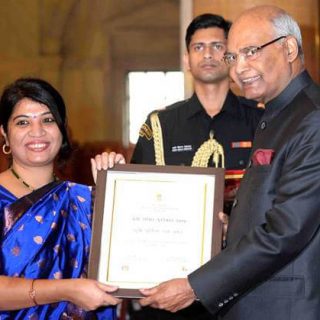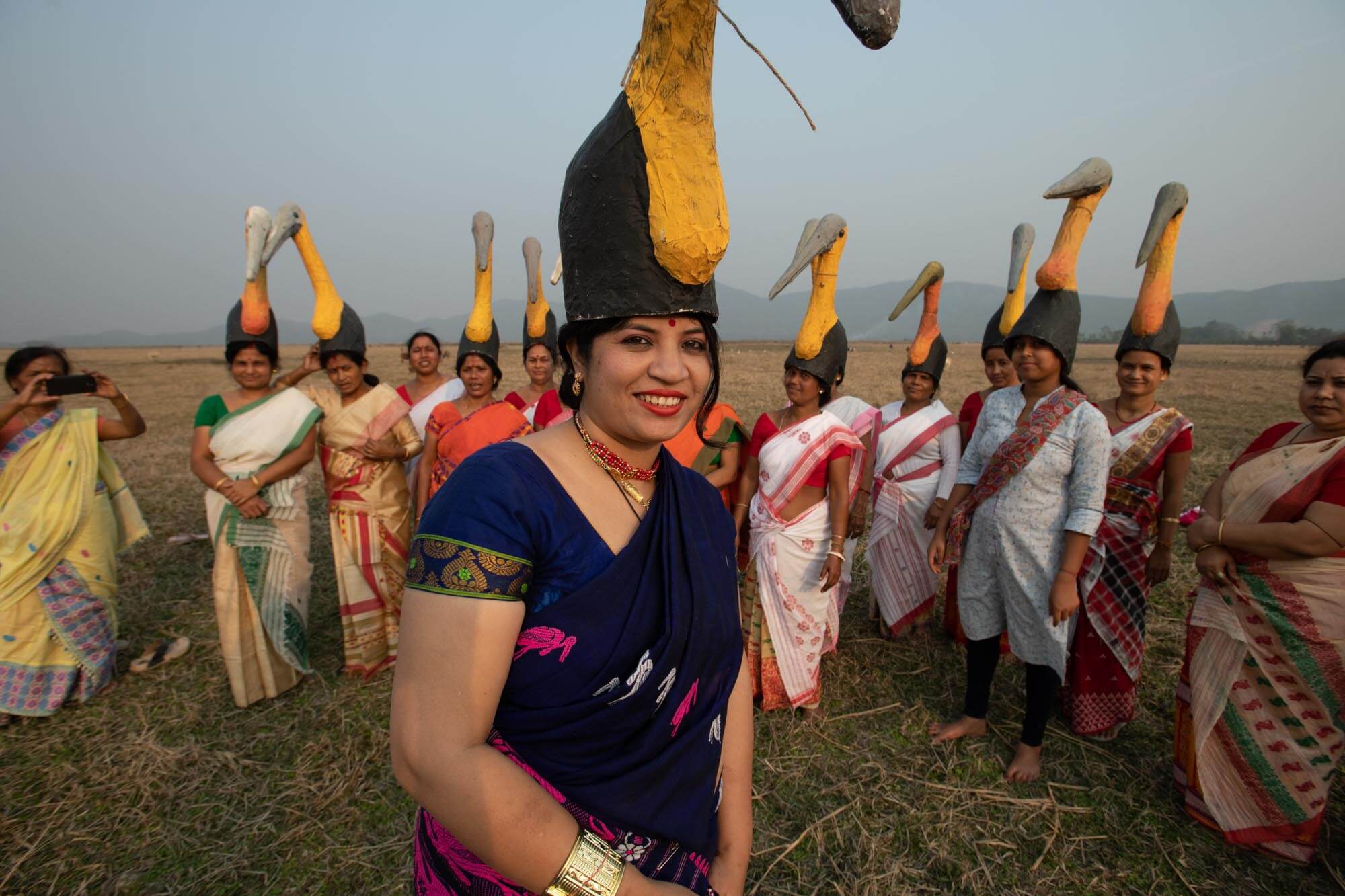Posted by Priyanka Shankar
When women come together in solidarity and lead, they become role models for several generations. In 1974, when Gaura Devi from Chamoli District in Uttarakhand realised that their forest was under threat from local loggers, she gathered 27 women from her village and guarded the trees by hugging them. The bravery of the women made the loggers back off. This triumph of the ‘Chipko Movement’ became internationally renowned. Fast forward a few decades, another movement led by women has created history in the Kamrup district of Assam.
The perennial Himalayan river, Brahmaputra, divides Kamrup into almost equal halves. The banks are dotted with lots of bamboo, coconut trees and paddy fields. The landscape is green and fresh.

A young Purnima Devi Barman who spent her childhood with her grandmother (late) Padumi Devi, on these banks, considered nature to be her school. Singing folk songs about the local birds with her grandmother was one of her favourite hobbies.
Her eyes light up as she begins to talk about the wetlands and the storks that used to frequent her locality. “Even today, I get hyper if I come across a paddy field or a wetland abounding with biodiversity!” enthuses Dr Barman. Having spent her childhood, surrounded by the richness of the natural world, an inclination towards protecting this biodiversity was something organic.
How An Army Of Women Came To Protect A Bird

After completing a Masters in Zoology, Dr Barman’s awe for storks encouraged her to pursue a PhD and learn more about a bird that was a big part of her childhood
Leptoptilos dubius, (the Greater Adjutant), known as Hargila in the local language.
Hargila is a five-foot huge, unclean and smelly scavenging bird that nests mostly in tall Kadam trees with a broad crown; the broad spreading branches provide enough space for the giant bird to sit. The IUCN has categorised the bird as an endangered species. Dr Barman only wanted to study them in detail, but a heart-rending incident during her PhD journey, made her a full-time conservationist.
“That day was life changing,” began Dr. Barman. “I remember it vividly. I left my twin daughters with my parents and went to the village. What I saw there shocked me! A man was cutting down a Kadam tree where the Hargila birds were nesting. The baby birds fell down right in front of my eyes and a few of them died right then. As a mother, it pained me so much. I went straight to the man and asked him why he did that, especially during the breeding season. I tried explaining to him about why the bird was important, but the response I got was sarcasm, mocks and a few laughs. The villagers thought of Hargila as a bad omen.”
“I felt helpless. I understood that the only way to make the villagers accept the bird was to integrate it as part of the culture. I also knew who I needed by my side – the women of the village. They are the most important part of Assamese festivals, rituals and culture. To bring them together and educate them was my mission. I paused my PhD to work full-time in Hargila Conservation,” she said.
Thus, the Hargila Army was born in 2008.

From a Bad Omen to a Symbol of Pride
Now, there are 220 nests and about 600 Hargila birds in the area. More nests are being identified in surrounding villages. Twelve birds were released into the wild in March, after rescue and rehabilitation. There are about 10,000 women in the Hargila Army who educate and create awareness about the bird and participate in rescue and conservation programmes. Even schools teach children about hargila. How did this happen?
Dr Barman takes out a beautiful piece of Gamosa and brings it close to the camera. Embroidered onto this traditional Assamese cloth is the Hargila bird. Hargila is now synonymous with Kamrup, thanks to the army of women who understood the importance of ecosystem balance.

“The Greater Adjutant is a friend of the farmer; it keeps the number of rats and snakes on check. Every species is important for a healthy ecosystem,” she stated.
The breeding months are between September and April. The women of Hargila Army even organise baby showers for the birds with traditional food and prayer songs, like how they would celebrate a woman entering motherhood in their culture.
Dr Barman’s magnetism and energy is what brought about this change. She introduced a platform during traditional cooking competitions and dance programmes to talk to women, organised games that created awareness about biodiversity and launched door-to-door awareness initiatives. Gradually, the people followed her steps.
Nani Rajbongshi, one of the important women of the Hargila Army since 2013, is in praise of Dr Barman’s efforts. “Initially, I too believed that Hargila is a dirty bird. But I saw Purnima baideu’s immense love for nature and the hargila birds and it created a change in me. Community conservation is a never-ending process, but under her leadership, the communities are accepting the bird as a part of the culture.”
Every conservation movement has a face and Dr Barman is the face of Hargila Conservation. “When Hargila moves up the rung from the endangered status, our objective would be fulfilled!” cites Dr Barman with extreme optimism.
Creating a Pathway for Women in Conservation

Dr Barman’s daughters Sampriti and Sanskriti, who have watched their mother’s every step in the conservation journey, believe that she has set an excellent example for women. “To observe and study the breeding behaviours of the birds, our mother had to climb up a 100-feet tall bamboo platform. She daringly climbed it with ease and sat on top, while also keeping an eye on us. We are always in awe of her. She works with people who have differing stands on issues, fights gender inequality and strives to be the best version of herself. It has been a tough path, but she never gives up!” the twins said with pride.
Her efforts have won her the Whitley Award (Green Oscar) in 2017 and the Nari Shakti Purashkar by President of India in 2018. Also in her huge list of accolades are the UNDP India Biodiversity Award from 2016 and the RBS Earth Hero Award in 2016.

She regularly participates in international conferences and workshops apart from local awareness initiatives.
“We need more women in nature and conservation science. Science isn’t limited to Physics, Chemistry, Computer or Engineering. Conservation is a large area and women understand nature so well. The voice of rural women has shaped many movements. Women who understand science and come to the forefront of conservation programmes, have the power to change the world!” concludes Dr Barma.
Also read: Amidst The Conflict, Mehreen Khaleel, A Conservationist From Srinagar, Bats For Biodiversity
This article is a part of 101Reporters’ Rukhmabai Fellowship Stories About Women In Stem and has been re-published here with consent. In this series, 101Reporters cover the inspiring work of Indian women in the fields of STEM.
About the author(s)
101Reporters is a pan-India network of grassroots reporters that brings out unheard stories from the hinterland.





